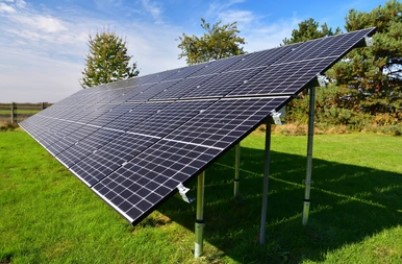Solar energy is an increasingly popular choice for clean and sustainable power. To ensure a successful installation, it’s vital to conduct a thorough site evaluation, which includes assessing solar potential, examining roof requirements and mounting options, exploring ground-mounted installations, and navigating permits and regulations. This article will guide you through these key aspects of site evaluation for solar installations.
Assessing Solar Potential
First and foremost, the solar potential of a location must be evaluated during the site evaluation process. It is crucial to determine if the site receives sufficient sunlight for optimal energy generation. Several factors can impact solar potential, including sunlight hours, shading, and the angle of the sun. A thorough assessment of these factors will help ensure that your solar installation is efficient and cost-effective.
Sunlight Hours:
The number of sunlight hours a site receives is a key factor in determining solar potential. Areas with longer daylight hours, such as those closer to the equator, typically have higher solar potential. Conversely, locations with shorter daylight hours or frequent cloud cover may have reduced solar potential. It’s essential to analyze annual sunlight hours to accurately gauge the site’s solar energy production capacity as part of the site evaluation process.
Shading:
Shadows cast by buildings, trees, or other structures can significantly reduce a solar panel’s efficiency. Before installing solar panels, it’s important to carefully analyze the site for shading issues. If necessary, trees can be pruned or panels can be strategically placed to minimize shading. Additionally, microinverters or power optimizers can be used to mitigate the impact of shading on solar panel performance.

Sun Angle:
The angle at which sunlight strikes the solar panels influences energy generation. Panels should be positioned to maximize exposure to direct sunlight throughout the year. In the northern hemisphere, panels should generally face south, while those in the southern hemisphere should face north. The tilt angle should be adjusted according to the site’s latitude to optimize solar energy production during the site evaluation.
Solar Calculators:
Various online tools, such as solar calculators, can be used to estimate the amount of energy that can be generated from a site. These tools consider factors such as location, sunlight hours, shading, and panel orientation to provide an accurate estimate of solar potential. By using a solar calculator, you can make informed decisions about the feasibility and expected return on investment of a solar installation.
Assessing solar potential is a vital step in the site evaluation process. By carefully considering sunlight hours, shading, sun angle, and using solar calculators, you can ensure that your solar installation generates maximum energy and provides long-term benefits.
Roof Requirements and Mounting Options
When considering a rooftop solar installation, it’s important to assess the roof’s structural integrity, materials, and size as part of the roof requirements. Ensuring that your roof meets these requirements will help guarantee the safety and longevity of your solar installation. In addition, the mounting system should be compatible with the roof material. Common mounting options include flush mounts, tilt mounts, and ballasted mounts, each with its own set of benefits and considerations.
Structural Integrity:
The structural integrity of a roof is critical for supporting the weight of solar panels and their mounting hardware. Before installation, a professional assessment should be conducted to determine if the roof can bear the additional load. Roofs with sufficient support and minimal signs of damage, such as sagging or leaks, are ideal candidates for solar installations.
Roof Materials:
The type of roofing material can influence the mounting options available for solar installations. Asphalt shingles, metal roofs, and tiles are common roof materials compatible with solar installations. However, certain materials, such as slate or wood shingles, may require specialized mounting hardware or techniques. Evaluating roof materials is an essential aspect of the roof requirements assessment, and It’s important to consult with a solar installation professional to ensure compatibility between the roof material and the mounting system.
Roof Size:
The size of the roof plays a significant role in determining the number of solar panels that can be installed. A larger roof area provides more space for solar panels, which can result in higher energy generation. To calculate the number of panels that can be accommodated, consider the roof’s dimensions, orientation, and any obstructions, such as vents or chimneys.

Flush Mounts:
Flush mounts are the most common mounting option for rooftop solar installations. These mounts attach directly to the roof surface, providing a low-profile appearance. Flush mounts are suitable for roofs with a pitch that closely matches the optimal tilt angle for solar panels, and they work well with most roof materials. However, they may not provide enough ventilation for the panels, which can reduce efficiency.
Tilt Mounts:
Tilt mounts allow solar panels to be positioned at an angle that maximizes sunlight exposure, regardless of the roof’s pitch. This mounting option can increase energy generation, especially on flat or low-slope roofs. Tilt mounts are more visible than flush mounts, and they may require additional structural support due to the increased wind load.
Ballasted Mounts:
Ballasted mounts are non-penetrating mounting systems that use weights, such as concrete blocks, to secure the solar panels to the roof. They are ideal for flat roofs and roofs with materials that are not suitable for direct attachment, such as membrane roofs. Ballasted mounts do not require roof penetrations, reducing the risk of leaks. However, they may necessitate additional structural support due to the added weight of the ballast.
Assessing roof requirements and selecting the appropriate mounting option is essential for a successful rooftop solar installation. By considering the roof’s structural integrity, materials, and size, and understanding the advantages and limitations of different mounting systems, you can ensure a safe and efficient solar installation.
Ground-Mounted Installations
Ground-mounted solar installations are an alternative for those with limited roof space or unsuitable roof conditions. They offer several advantages over rooftop installations, including greater flexibility in solar panel orientation and easier maintenance. However, ground-mounted systems may require additional land and can be more expensive due to the need for ground-mounting structures. Below are some key aspects to consider when exploring ground-mounted installations.
Site Selection:
Choosing an appropriate site for a ground-mounted solar installation is essential. The site should have adequate space to accommodate the desired number of solar panels and be relatively flat with minimal shading. In addition, the location should have suitable soil conditions for installing the mounting structures and be easily accessible for maintenance and monitoring.
Orientation and Tilt:
Ground-mounted installations provide more flexibility in terms of solar panel orientation and tilt angle compared to rooftop installations. This flexibility allows for optimal positioning of the panels to maximize sunlight exposure and energy generation. The panels should be oriented toward the equator (south in the northern hemisphere and north in the southern hemisphere), with the tilt angle adjusted according to the site’s latitude.

Mounting Structures:
Ground-mounted solar installations require specialized mounting structures to secure the panels in place. These structures can be either fixed-tilt or tracking systems. Fixed-tilt systems hold the panels at a fixed angle, while tracking systems automatically adjust the panel orientation throughout the day to follow the sun’s path. Tracking systems can generate more energy but are typically more expensive and complex to install and maintain.
Cost Considerations:
While ground-mounted installations offer several advantages, they can be more expensive than rooftop installations. The need for additional land, mounting structures, and potential site preparation can increase the overall cost. However, the higher energy generation potential of ground-mounted systems can offset these costs over time, making them a worthwhile investment for some property owners.
Permitting and Regulations:
Ground-mounted solar installations may be subject to different permits and regulations compared to rooftop installations. It’s important to research local building codes, zoning restrictions, and utility interconnection requirements before proceeding with a ground-mounted installation. Additionally, some jurisdictions may have specific regulations regarding the installation of solar panels on agricultural land or in environmentally sensitive areas.
Ground-mounted solar installations can be a viable alternative for those with limited roof space or unsuitable roof conditions. By carefully considering site selection, panel orientation and tilt, mounting structures, cost factors, and local permits and regulations, you can determine if a ground-mounted solar installation is the right choice for your property.
Navigating Permits and Regulations
Understanding and complying with local permits and regulations is essential for a smooth solar installation process. Familiarizing yourself with these requirements will help ensure that your solar project is completed in a timely and efficient manner. Here are some key areas to research when navigating permits and regulations for solar installations:
Building Codes:
Local building codes outline the structural, electrical, and safety requirements for solar installations. These codes may specify requirements for the mounting system, wiring, and grounding, as well as wind and snow load capacity. It’s crucial to consult with a solar installation professional who is familiar with the local building codes to ensure that your project complies with these requirements.
Zoning Restrictions:
Zoning regulations govern the permissible land uses within specific areas of a jurisdiction. Some zoning ordinances may limit the installation of solar panels on residential, commercial, or agricultural properties. It’s important to check with your local planning department to determine if there are any zoning restrictions that could affect your solar installation.
Utility Interconnection Requirements:
When connecting your solar installation to the grid, you must comply with the utility’s interconnection requirements. These requirements may include specific equipment and safety standards, as well as the application process and fees for grid connection. It’s essential to consult with your local utility provider to ensure that your solar installation meets their interconnection requirements.

Permitting Process:
Obtaining the necessary permits is a crucial step in the solar installation process. The permitting process typically involves submitting a solar installation plan, which includes details on the system design, equipment specifications, and electrical diagrams. Additionally, a site plan may be required, showing the location of the solar panels and any associated equipment. Be prepared for potential delays, as the permitting process can take several weeks or even months to complete.
Incentives and Rebates:
Many jurisdictions offer financial incentives and rebates to encourage the adoption of solar energy. These incentives can help offset the cost of installation and make solar power more affordable. Research your local, state, and federal incentives, such as tax credits, grants, or rebates, and factor them into the overall cost of your solar installation.
Navigating permits and regulations is a crucial aspect of the solar installation process. By researching local building codes, zoning restrictions, utility interconnection requirements, and available incentives, you can ensure that your solar project is completed smoothly and in compliance with all applicable regulations. This will ultimately help you maximize the benefits of your solar investment.
Conclusion
A comprehensive site evaluation is essential for successful solar installations. By carefully assessing solar potential, roof requirements and mounting options, considering ground-mounted installations, and navigating permits and regulations, you can ensure your solar investment provides maximum benefits.